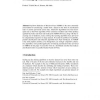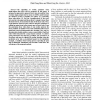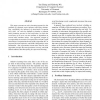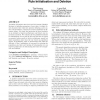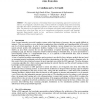599 search results - page 26 / 120 » An Algorithm for Learning Abductive Rules |
IFIP12
2008
13 years 9 months ago
2008
Top Down Induction of Decision Trees (TDIDT) is the most commonly used method of constructing a model from a dataset in the form of classification rules to classify previously unse...
FUZZIEEE
2007
IEEE
14 years 2 months ago
2007
IEEE
The algorithm of on-line predictor from input-output data pairs will be proposed. In this paper, it proposed an approach to generate fuzzy rules of predictor from real-time input-o...
ICDM
2007
IEEE
14 years 2 months ago
2007
IEEE
This paper presents an active learning approach to the problem of systematic noise inference and noise elimination, specifically the inference of Associated Corruption (AC) rules...
GECCO
2007
Springer
14 years 2 months ago
2007
Springer
A number of heuristics have been used in Learning Classifier Systems to initialise parameters of new rules, to adjust fitness of parent rules when they generate offspring, and ...
AIIA
2001
Springer
14 years 12 days ago
2001
Springer
– This paper proposes a knowledge-based neurocomputing approach to extract and refine a set of linguistic rules from data. A neural network is designed along with its learning al...
